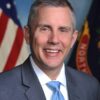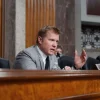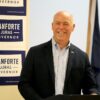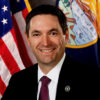Fed Cuts Rates Again, But Powell Warns the Easing Cycle May Be Near Its End

The Federal Reserve delivered a widely anticipated quarter-point rate cut this week, lowering its benchmark federal funds rate to a range of 3.75% to 4.00%, its second reduction of the year. But despite the move, Chair Jerome Powell sent a clear message to markets: don’t expect a rapid march toward lower borrowing costs.
The decision came after weeks of speculation that the central bank might move more aggressively to counter signs of slowing job growth and cooling consumer spending. Instead, Powell and a divided Federal Open Market Committee opted for a cautious step—one meant to balance a softening economy against lingering inflation pressures that still hover above the Fed’s 2% target.
“We’re not on a pre-set course,” Powell said at his Wednesday press conference. “Future adjustments will depend on the data. Inflation remains too high, and we need to see more progress before declaring victory.”
The 10-to-2 vote reflected that tension. Two committee members dissented—one favoring no change at all, the other pushing for a deeper, 50-basis-point cut. The split underscored the growing divide between so-called hawks, who worry that easier policy could reignite inflation, and doves, who fear the Fed might tighten the brakes too much on a slowing economy.
Markets reacted with characteristic volatility. Stocks rallied briefly on the announcement but faded after Powell’s remarks, as traders recalibrated expectations for another cut in December. Yields on 10-year Treasury notes ticked higher, a sign that investors see rates staying elevated longer than previously hoped.
“Powell effectively poured cold water on the idea of a cutting spree,” said Megan Horn, chief economist at CapitalView Advisors. “He’s trying to keep both sides of the debate at bay—acknowledging weaker growth without signaling panic.”
For ordinary Americans, the move may offer modest relief. Credit card and auto loan rates are expected to ease slightly, and homeowners could see small declines in mortgage costs. But the bigger picture remains uncertain. Inflation in housing and energy has proven sticky, and wage growth—while slowing—continues to keep upward pressure on prices.
Behind the Fed’s decision lies an economy that still shows resilience, even as cracks begin to form. Job creation has slowed but remains positive. Consumer confidence has wavered but not collapsed. And while manufacturing is contracting, services and travel spending continue to prop up growth.
“This is the foggy part of the economic cycle,” Powell said. “We’re seeing mixed signals. It’s like driving with the headlights on low beam—you can see some of the road ahead, but not far enough to be sure where the turns are.”
That uncertainty is already being felt on Wall Street. Traders who had positioned for multiple cuts this year are rethinking their strategies, while volatility in bond and options markets has crept higher. For investors and retirees seeking income, the Fed’s careful tone suggests yields may not fall quickly—keeping fixed-income opportunities attractive but making timing critical.
The next Fed meeting in December could prove pivotal. Between now and then, a handful of economic reports—on jobs, inflation, and consumer spending—will likely determine whether this week’s move marks the midpoint of an easing cycle or the end of it.
For now, Powell and his colleagues appear to be threading a narrow path between two competing risks: cutting too little and stalling the economy—or cutting too much and reigniting the inflation they’ve spent years trying to contain.
By Montana Newsroom Staff










